It is hardly unexpected that Italy, the cradle of the Renaissance and the Roman Empire, has more UNESCO World Heritage cultural monuments than any other nation in the world, nor that it is home to such a vast collection of masterpieces of architecture and art.
However, Italy’s best tourist destinations are not limited to its stunning art and architecture; it also boasts exceptional natural attractions including lakes, mountains, and a dramatic coastline. If you had a single passion, such as hiking or Renaissance art, you could create an itinerary around it, but most first-time travelers prefer to enjoy a variety of Italy’s top attractions.
Table of Contents
The attractions that come next showcase Italy’s breathtaking scenery, art, architecture, history, and areas to unwind and experience Italian culture.
Italy Best Places
1. Colosseum, Rome

Up until the present era, this enormous amphitheater has served as a model for sporting facilities. It was the largest amphitheater ever constructed by the Roman Empire and the largest to survive. Constructed in 72 CE by Vespasian, the Colosseum was expanded with the addition of a fourth level by his son Titus. It served as a stage for public performances, including fictitious naval combat.
Two more subterranean layers of tunnels, chambers, cells, and passages housing gladiators, laborers, wild animals, and stores were covered by an 83 by 48-meter wooden floor.
Today, the building is a conspicuous reminder of the past and the long history of Rome, standing in sharp contrast to the contemporary growth that envelops it.
Advice: Enrolling your children in a gladiator class will enhance the memory of their visit to the Colosseum, one of the most visited sites in Rome for families. You and they can practice your swordplay with wooden swords while donning dummy gladiator helmets and shields.
2. Florence Duomo Santa Maria del Fiore
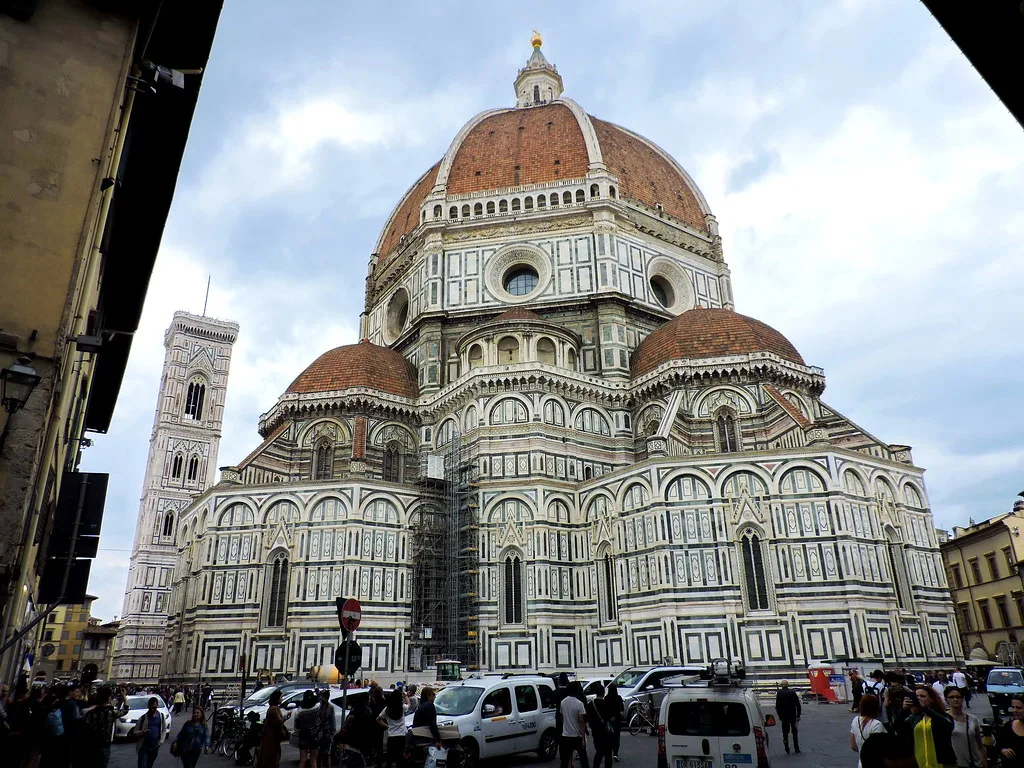
The Duomo Santa Maria del Fiore, or the Cathedral of Santa Maria del Fiore, is a prominent structure in the Florence skyline and is regarded as one of the greatest cathedrals in the entire world. The remarkable dome, completed by Filippo Brunelleschi in 1434, is the most prominent feature of the cathedral, which was constructed between the 13th and the 15th centuries.
Situated near the cathedral in Piazza del Duomo, the bell tower of the building is adorned with the same patterned marble that characterizes Tuscan Romanesque architecture.
The 82-meter-tall Giotto-designed campanile can be reached by ascending 414 steps to a viewing platform that offers breathtaking views of the city and the dome.
A splendid baptistery, renowned for its bronze paneled doors by Lorenzo Ghiberti, stands opposite the Duomo. Visit the cathedral museum, Museo dell’Opera del Duomo, to view the original, superbly wrought panels that have been replaced with exact duplicates to prevent the originals from deterioration.
Advice: Visitors in shorts or tank tops won’t be allowed entry, as is the case with many Italian cathedrals. Inside the dim, slender gap between the inner and outer shells, you can climb the more than 450 steep steps to the pinnacle of the dome. Despite the barrier, as you climb, you can see the church below, which is more than 40 meters down. The vista has never seemed worth it to me.
There are nearly as many stairs in Giotto’s bell tower, but they are arranged in a more traditional stairway configuration.
3. The Grand Canal in Venice

Travelers have been enjoying the custom of taking a gondola ride around Venice’s canals for centuries. Venice is an island city, and for a very long time, its primary thoroughfares—connected by a maze of tiny alleyways—were the canals.
Among these waterways, the Grand Canal is the biggest and most well-known, forming a broad S-shaped path through the city. The largest palaces, formerly possessed by the wealthiest and most influential families in the Venetian Republic, line its edges. Many of the stately palaces have their fronts facing the water, and the best way to see them is from a Vaporetto cruise along the Grand Canal.
Make sure to take in some of the more atmospheric smaller canals during your gondola ride and your on-foot sightseeing tours; These are dotted with historic structures that have largely not changed over hundreds of years.
Author’s Tip: Take a traghetto, a small gondola, across the Grand Canal like the locals do when they are between bridges for a distinctly Venetian experience. These tiny boats, devoid of any ornamentation or seating, shuttle back and forth between Ca’ Rezzonico and San Samuel, between the vaporetto stops of San Angelo and San Toma, and a few other locations, one of which is close to St. Mark’s Square.
When most Venetians stand when crossing the street, if you’re uncomfortable, you can take a seat on one of the little benches. Long walks between bridges are avoided with the small fare.
4. Leaning Tower of Pisa

One of the many sights in Pisa is the Leaning Tower of Pisa (La Torre Pendente), which gained international attention due to a fault rather than the substantial elegance of its construction. The tower’s construction started in the 1100s, and by the time it reached the third storey, the sinking that caused the lean had started.
It was expected that it would fall over by the year 2000 due to its increasing tilt throughout the centuries, and restoration work began in the 1990s. Today, guests can climb the tower’s stairs for an amazing perspective of the city.
The Leaning Tower is located on Piazza dei Miracoli, which it shares with the stunning Santa Maria Assunta Romanesque Cathedral and a circular freestanding baptistery. These are all exceptional examples of medieval stone carvings.
Author’s Tip: Use the free access to the Cathedral Museum, which is part of your ticket to the cathedral, to get the finest view of the Leaning Tower. The cathedral’s treasury contains valuable works made of gold and silver, which you should not miss while visiting the museum. The huge windows on the upper floor provide a view of the tower.
5. Vatican City: Basilica of St. Peter, Sistine Chapel & Vatican Museums
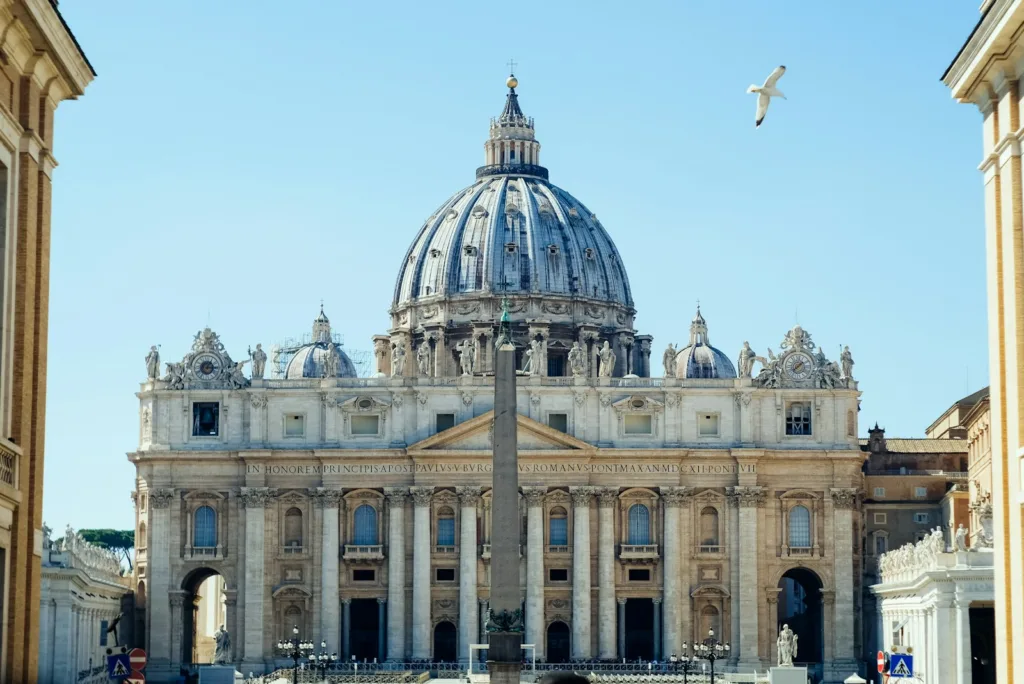
Some of the most valuable artwork and art collections in the entire world may be found in the Vatican. The magnificent Basilica of St. Peter, which houses Michelangelo’s Pieta, one of his most moving creations, and St. Peter’s tomb, is the focal point of the complex.
The Pope addresses adherents in St. Peter’s Square, which is outdoors. Vatican City offers so much to see that a day or more may be easily spent here.
The Sistine Chapel’s walls and ceilings are adorned with Michelangelo’s frescoes that illustrate the creation story found in the Book of Genesis. The scenes include the creation of Adam and Eve, the division of light and darkness, the story of Noah, and other biblical events, culminating in the dramatic Last Judgment.
If you still have energy for more sightseeing after visiting the Sistine Chapel and the interior of the cathedral, take a tour of the beautiful Papal Apartments in the Palace of the Vatican to see the amazing sequence of murals by Raphael. Raphael’s frescoes in the Sistine Chapel, like those by Michelangelo, symbolize the pinnacle of Renaissance painting.
6. The Uffizi Gallery in Florence
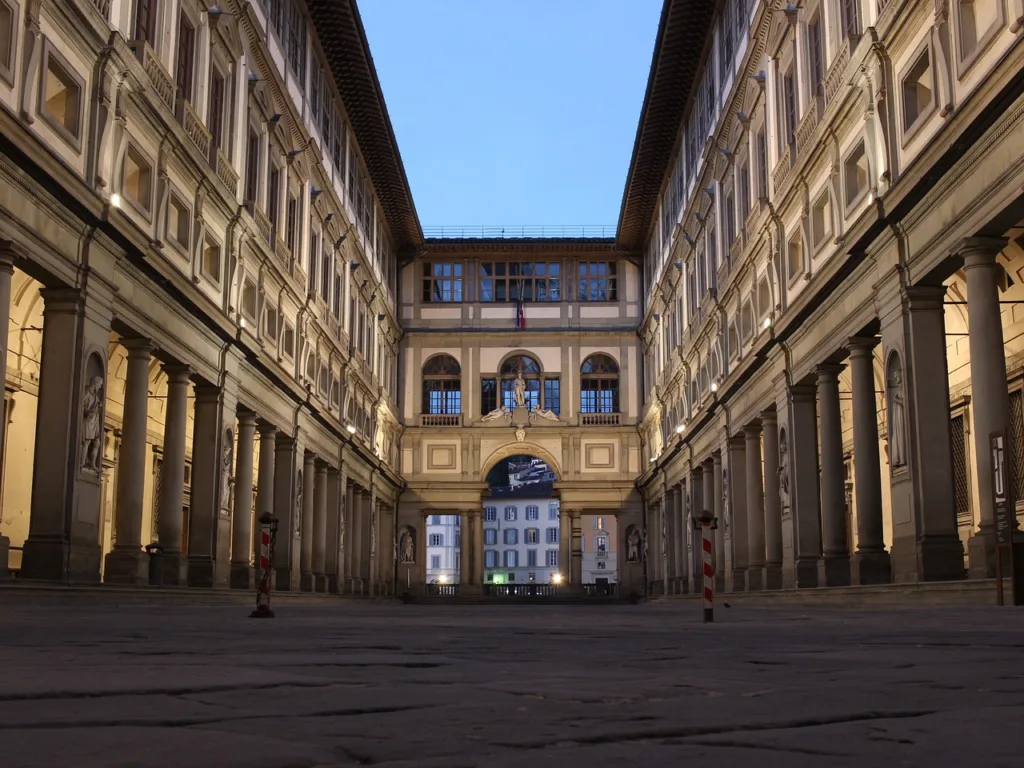
The Uffizi Gallery is a one-stop history of Italian Renaissance art in addition to being one of the best art museums in the world. Its greatest treasure is its collection of paintings that illustrate the growth of Western art from the 14th to the 16th century, even if it includes pieces by some of the great artists of the genre.
Here you will see some of the earliest portraits created by painters moving beyond religious art, some of the earliest experiments with perspective, and some of the earliest examples of naturalistic and scenic settings used in religious art.
Don’t miss seeing Botticelli’s Birth of Venus, the most well-known piece in the Uffizi.
Advice: The Uffizi has designed kid-friendly tours that revolve around themes like monsters in art, even though art museums—especially ones this size—are not typically popular destinations for families on vacation. To locate the artworks, download the brochure from the Uffizi website and follow them along like a treasure hunt.
7. Cinque Terre

Beautiful Cinque Terre coastline with towering cliffs and steep hillsides that provide a view of the Mediterranean. There are numerous ways to get to the five charming villages of Monterosso al Mare, Vernazza, Corniglia, Manarola, and Riomaggiore. You may connect them with walking trails, a railroad that burrows beneath the headlands and emerges at each town, or a charming little road that winds high on the slope above.
Walking between the villages is one of the most well-liked activities since it allows visitors to take in the scenery. Even with modern tourism, the little towns retain the charm of bygone fishing villages and provide a feeling of seclusion. It is crucial to verify current conditions before organizing a hike because landslides have the potential to restrict segments of the trail.
There are various ways to get there whether you’re traveling from Milan or Florence. If you have limited time, be sure to visit Vernazza and Riomaggiore, which are the most picturesque and attractive cities.
The author’s suggestion : Is to take the quickest and most straightforward route, known as the Via dell’Amore (trail of Love), which links Riomaggiore and Manarola. The trail is carved along the cliffs between the villages. This paved walkway reopened in the middle of summer after being closed by a landslide over ten years ago.
8. Lake Como

One of Italy’s most attractive locations is Lake Como, which is bordered by small, charming towns and surrounded by mountains. The most well-known villas and palaces along the lake’s forested beaches are Villa Balbianello and Villa Carlotta, both of which are flanked by public gardens and have been a haunt of the affluent since Roman times.
Similar to the Mediterranean, the lakeshore’s warm climate makes it a popular destination for gardeners and draws large numbers of visitors. Aside from the lakeside vacation towns, there’s an abbey dating back to the eleventh century.
Como, a small city at the base of the lake that has been significant since Roman times, is only a short train ride from Milan. You can take regularly scheduled steamers from the dock to go on excursions around the lake, which makes visiting the lakeside sites convenient.
Author’s Tip: The area of the lake that is most picturesque is from Como town to the middle, where the three arms converge. The villages of Tremezzo, Varenna, and Bellagio are connected by a cross-lake ferry. Taking the Navigazione Laghi tour boat from Como to one of the three cities and hopping on ferries to visit the others is a great opportunity to see the highlights of the lake and explore these towns, which are home to most of the attractions. Then take a later boat back to Como.
9. Pantheon
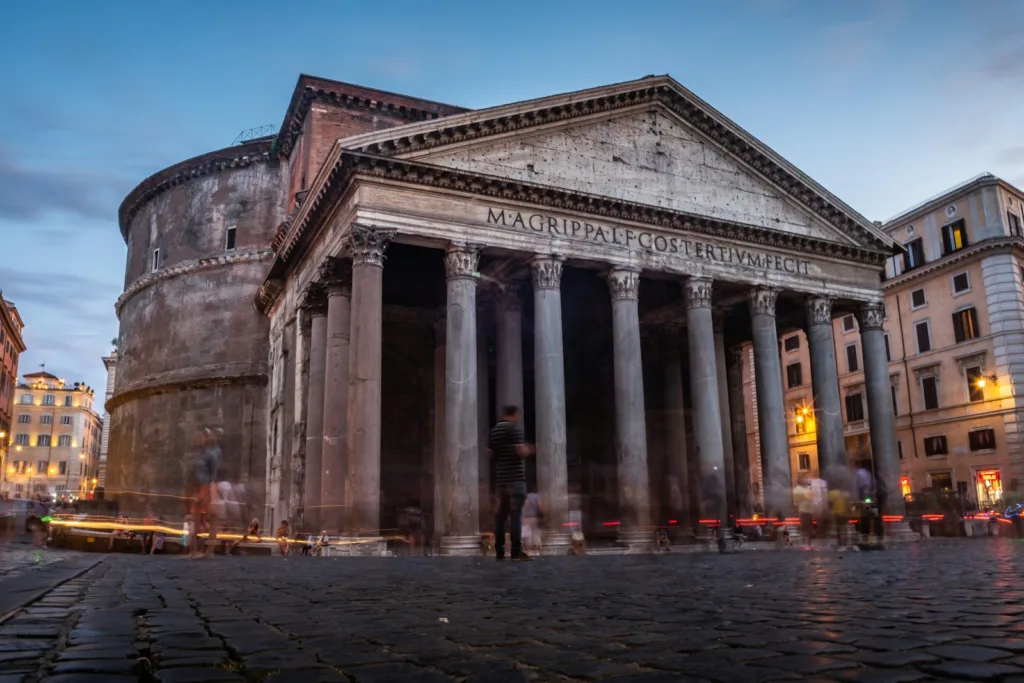
The amazing architectural accomplishments of the Roman Empire are on display at the Pantheon, a remarkably well-preserved Roman relic.
The exact dimensions of the structure, honoring the planetary gods, were designed to symbolize the firmament and the sun. The height and diameter of the structure were equal, and the room was only illuminated by a single light beam that entered from the top of the dome.
It was abandoned when early Christian rulers outlawed using a pagan temple for religious purposes, and the Pope later dedicated it in 609 CE. The Pantheon is home to the tombs of notable Italians, including Renaissance painter Raphael and Italian Kings.
10. Trevi Fountain, Rome
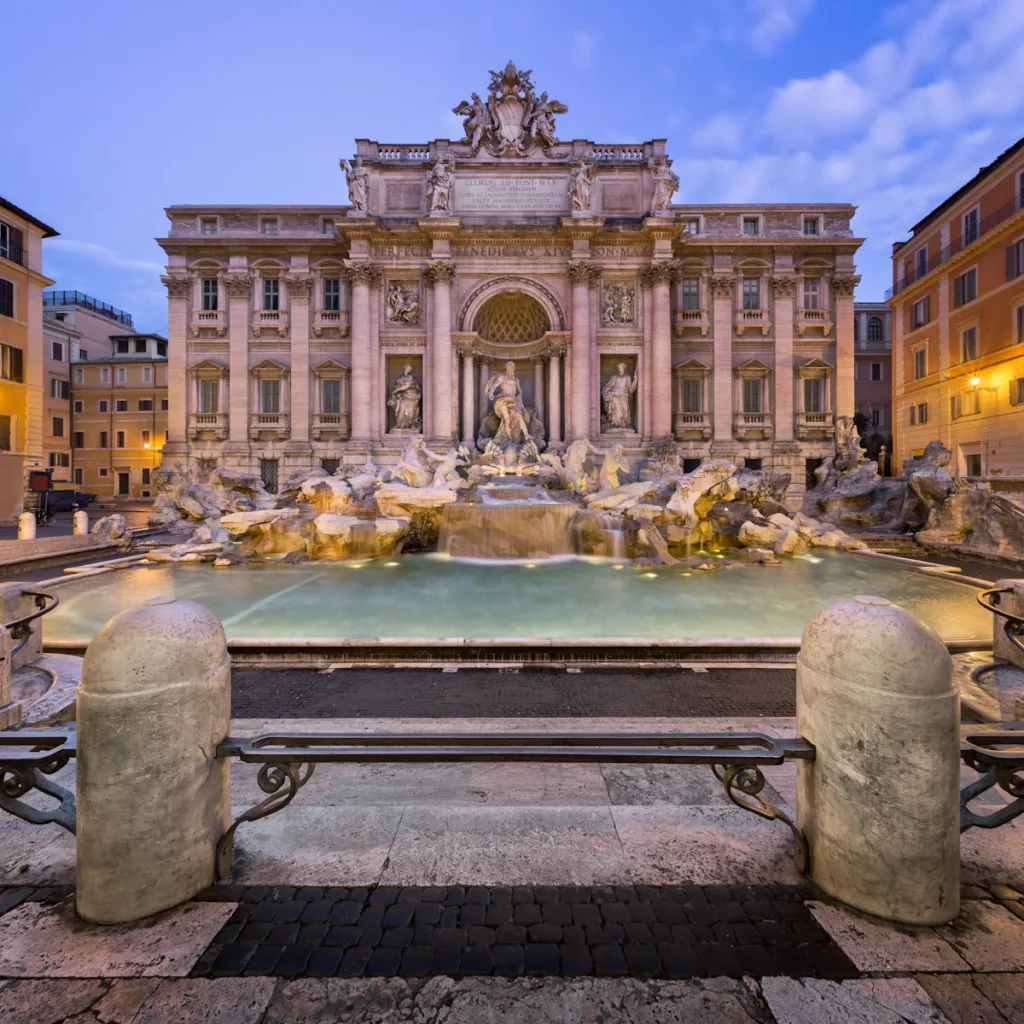
Trevi Fountain is a well-known landmark that is a must-see attraction for anyone traveling to Rome. It has been immortalized in movies such as La Dolce Vita, Roman Holiday, The Lizzie McGuire Movie, and Three Coins in a Fountain. It is said that tossing a coin over one’s left shoulder (with the right hand) ensures a return journey.
The fountain itself started out as a public water source connected to an aqueduct constructed in the first century BC, although the origins of the custom are unclear. Pope Urban VIII requested that Bernini design a more aesthetically pleasing fountain by 1629. Bernini’s design was abandoned after the Pope passed away, and Nicolò Salvi finished creating the current Neptune, horses, and shells design in 1751.
11. Amalfi Coast

South of Naples and Sorrento, on the Sorrentine Peninsula, lies a breathtaking length of coastline known as the Amalfi Coast, which is recognized as a UNESCO World Heritage Site. Along the precipitous mountain slopes that descend to the sea, hillside settlements are dangerously constructed.
The principal villages along this coast are Amalfi, with its vibrantly colored cathedral, and Positano. You can take a driving trip down the coast or take a boat ride between villages to see the stunning, nearly vertical shoreline from various angles.
Walking pathways crisscross the entire coast, but the Sentiero degli Dei, or Footpath of the Gods, which begins in Positano and runs west, offers the most spectacular walking landscape. My favorite spot to observe the scenery is in the village of Ravello, high above the Amalfi Drive.
Ravello, a large town in the thirteenth century, clings to the steep mountainside in terraces, and the gardens of its ancient villas provide picturesque belvederes from which to enjoy flower-framed views of the coast below.
Author’s advice: The Marina Grande in Positano is one of the top locations to go if you want to see celebrities. It’s the busiest beach along the Amalfi Coast and one of the biggest. Try the sandy Maiori Beach at the eastern end of the Amalfi coast for a more sedate experience.
12. St. Mark’s Basilica and Doge’s Palace
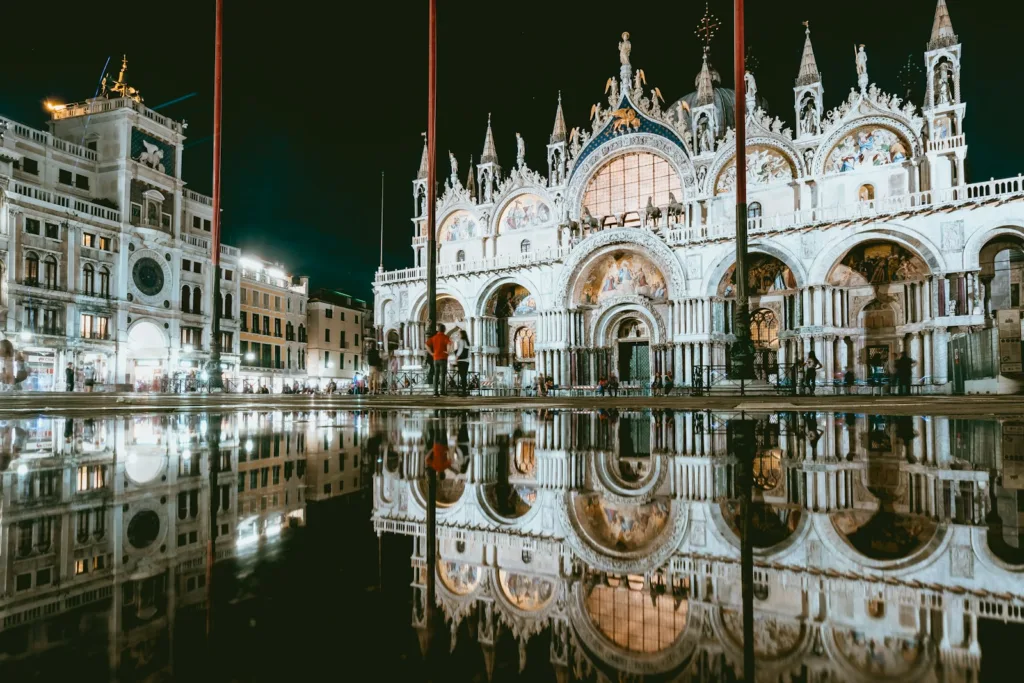
The elaborate Byzantine-inspired façade and domes of St. Mark’s Basilica, which overlooks Piazza San Marco, St. Mark’s Square, make it one of the most popular tourist destinations in Venice. The structure itself is a work of art, showcasing Venice’s extensive trading ties with the East through a blend of architectural styles strongly influenced by the Byzantine Empire.
The large altar adorned with gold and diamonds, as well as the exquisite mosaics along the domes and vaults, are highlights of the expansive interior. There is more glistening gold and gems in the Treasury.
A journey up to the porch will reward you with a memorable view of St. Mark’s Square, the lofty campanile, and the clock tower among the famous horses.
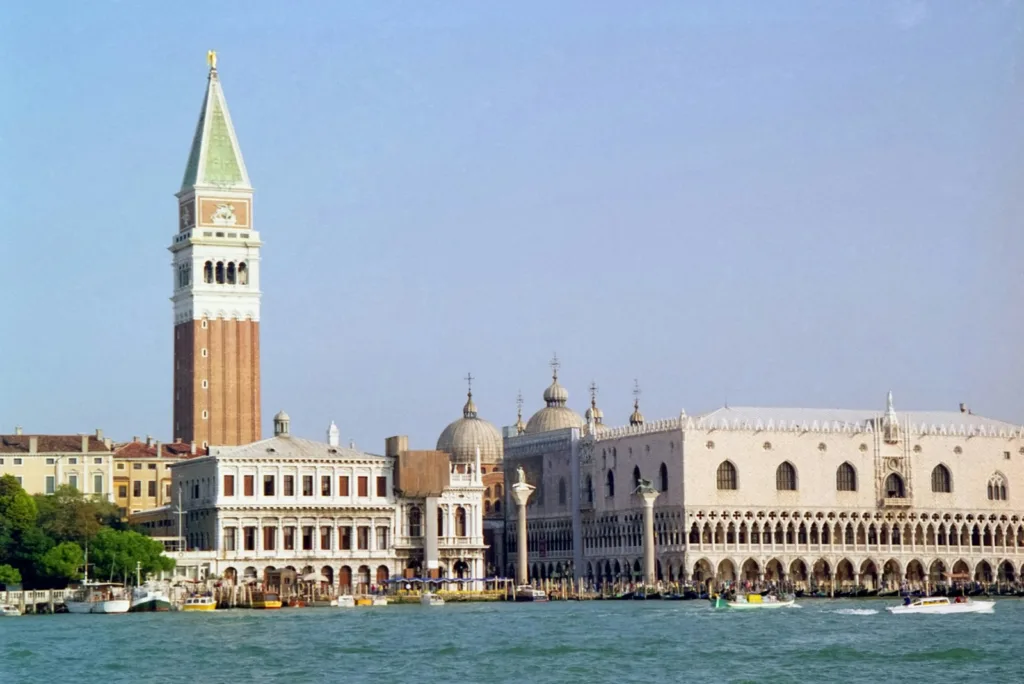
Adjacent to the church is the Doge’s Palace, which is likewise brimming with exquisite examples of Italian art. You can typically visit the prison where Casanova escaped over the rooftops as part of a tour of the Doge’s Palace. You’ll have to cross the well-known Bridge of Sighs to get there.
13. Verona’s Roman Arena and Historic Center
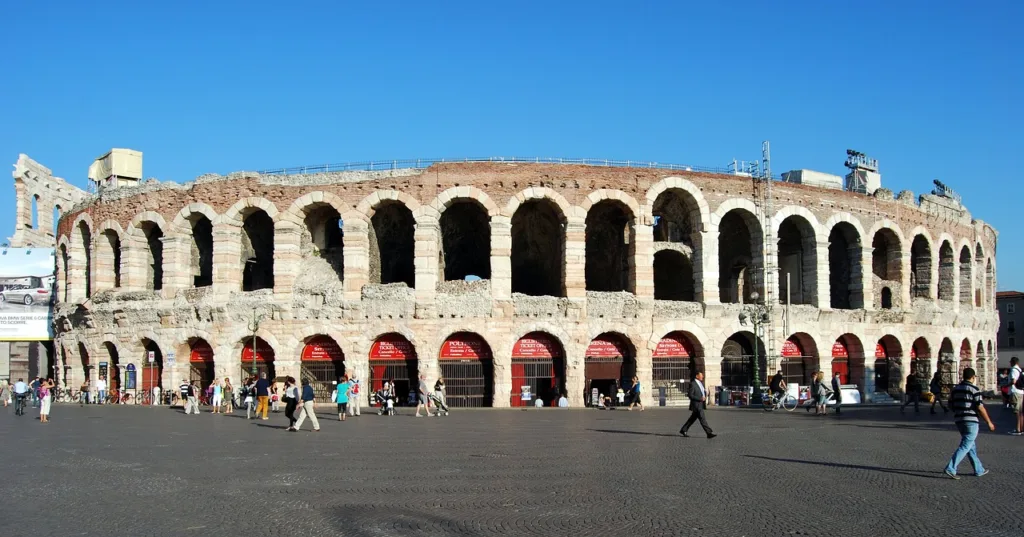
The focal point of the centro storico, or historic center, of Verona, is the Arena, one of the biggest and best-preserved Roman amphitheaters still standing. It is one of many remnants of the era when Verona was a significant Roman city. “Verona has preserved a remarkable number of monuments from antiquity, the medieval and Renaissance periods,” according to UNESCO, which named it a World Heritage Site.
Verona prospered during the 13th and 14th centuries when it was ruled by the Scaliger dynasty, and from the 15th to the 18th century when it was a component of the Republic of Venice. Overlooking the exquisitely castellated Ponte Scaligero, a bridge dating back to the 14th century, the majestic Castelvecchio served as both a palace and a defensive castle. Today, it is an exceptional art museum.
More vestiges of the city’s Roman past may be found throughout the old center in the form of stone gates, regal structures with typical Venetian Gothic windows, and Romanesque churches. And of course Juliet’s Balcony (really constructed in the 1930s as a tourist attraction) is located in a courtyard near Piazza del Erbe’s daily market.
14. Pompeii and Mount Vesuvius

Mt. Vesuvius, a still-smoking volcano, overlooks the ruins of the city it devastated in AD 79. Nevertheless, a great deal of the city’s artistic treasures were also saved by that same eruption, including sculptures, mosaics, and frescoes that were covered in lava. as it cooled.
The remnants of homes, marketplaces, baths, temples, theaters, streets, and human remains have all been found during the course of several centuries of excavations at Pompeii. Explore the site, stroll through the ancient streets marked by chariot tracks, and witness Roman engineering from over 2,000 years ago.
The excavated city of Herculaneum is located close to Pompeii. It was completely destroyed in 79 CE by the same eruption, but was covered in ash and lava that preserved and froze the town exactly as it was. It is possible to visit both locations in a single day, but spending more time allows you to climb to the extreme edge of Vesuvius, which is still active.
15. Roman Forum
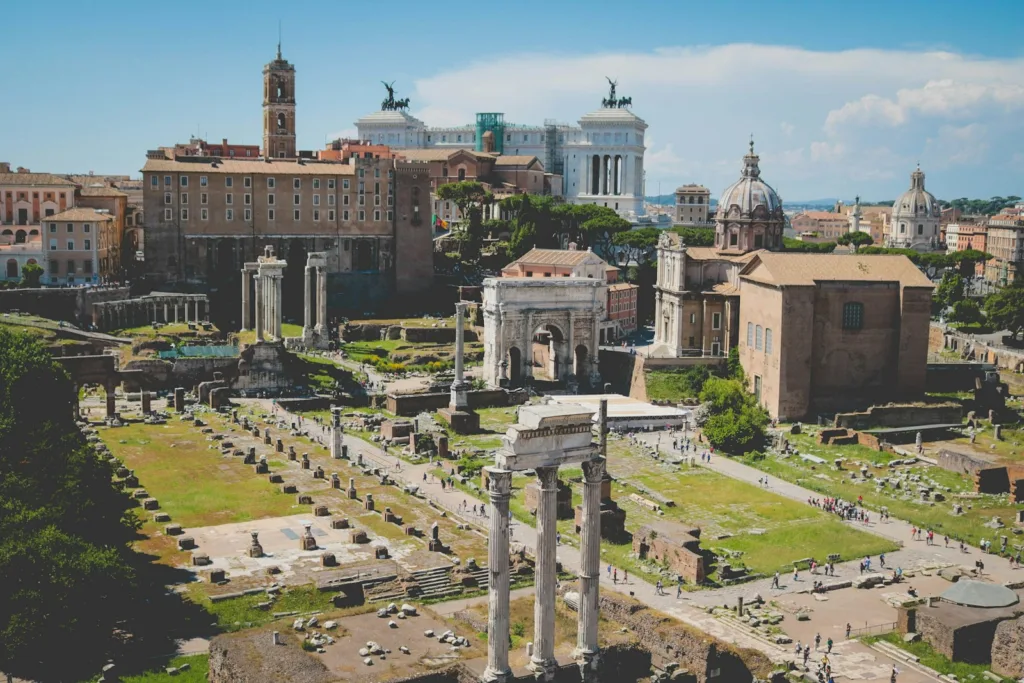
To fully grasp the Roman Forum’s historical appearance and functionalities, one may need to use their imagination or the expertise of a knowledgeable tour guide. Its historical importance as the center of the Roman Empire, however, cannot be emphasized.
Initially, public buildings were constructed, followed by temples, and soon the region was home to Rome’s administrative hub. Building market halls in response to commerce led to the Forum being the center of the city’s and subsequently the Roman Empire’s public life.
The only remnants of Ancient Rome that still stand today are the foundations, fragments of buildings, and pillars of temples, market halls, courts, and public buildings that formerly stood here a millennium ago.
Author’s Tip: A two-day ticket can see the Forum, the Colosseum, and Palatine Hill. It’s better to avoid visiting the Forum and Palatine Hill on the same day if you intend to visit all three because they both involve a lot of walking.
16. The Valley of Temples in Agrigento, Sicily
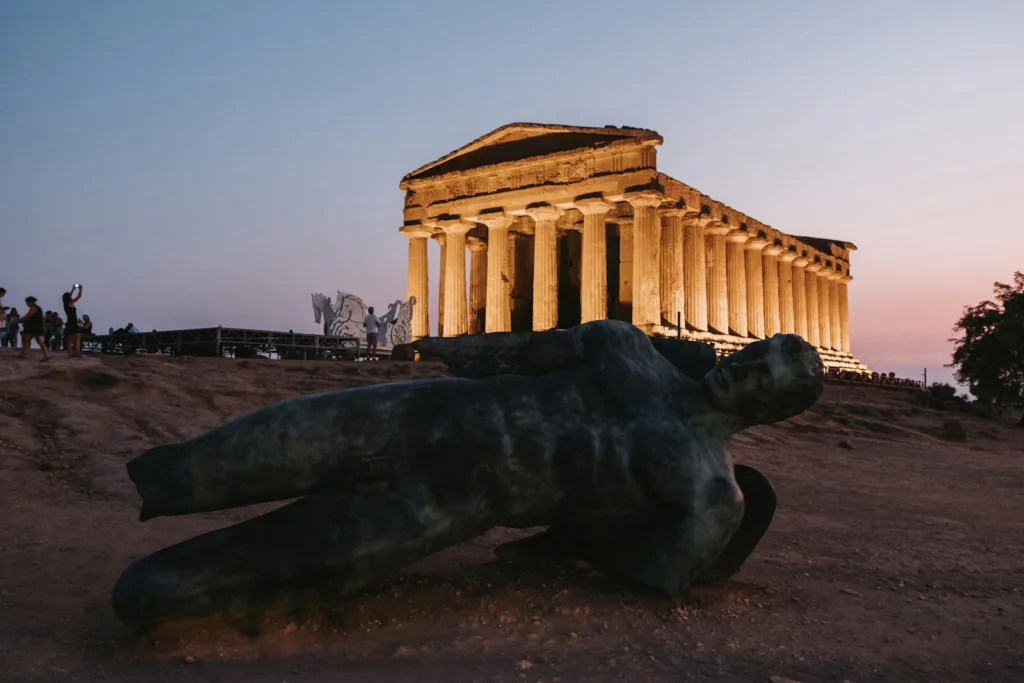
This complex of ancient Greek temples is recognized by UNESCO as a World Heritage Site due to its exceptional state of preservation as well as the sheer number of them that still stand. The Agrigento temples, in contrast to the majority of other ancient Greek settlements, have not had buildings added to them over time, preserving both the original community’s environment and the temple structures themselves.
One of the finest Doric temples still standing in existence, Tempio di Concordia, is the main attraction. And the Tempio di Juno Lacinia is almost as big. An earthquake brought down the columns of the biggest, the Temple of the Olympian Zeus. “One of the most extraordinary representations of Doric architecture in the world” is how UNESCO describes the Valley of Temples.
17. Milan Duomo
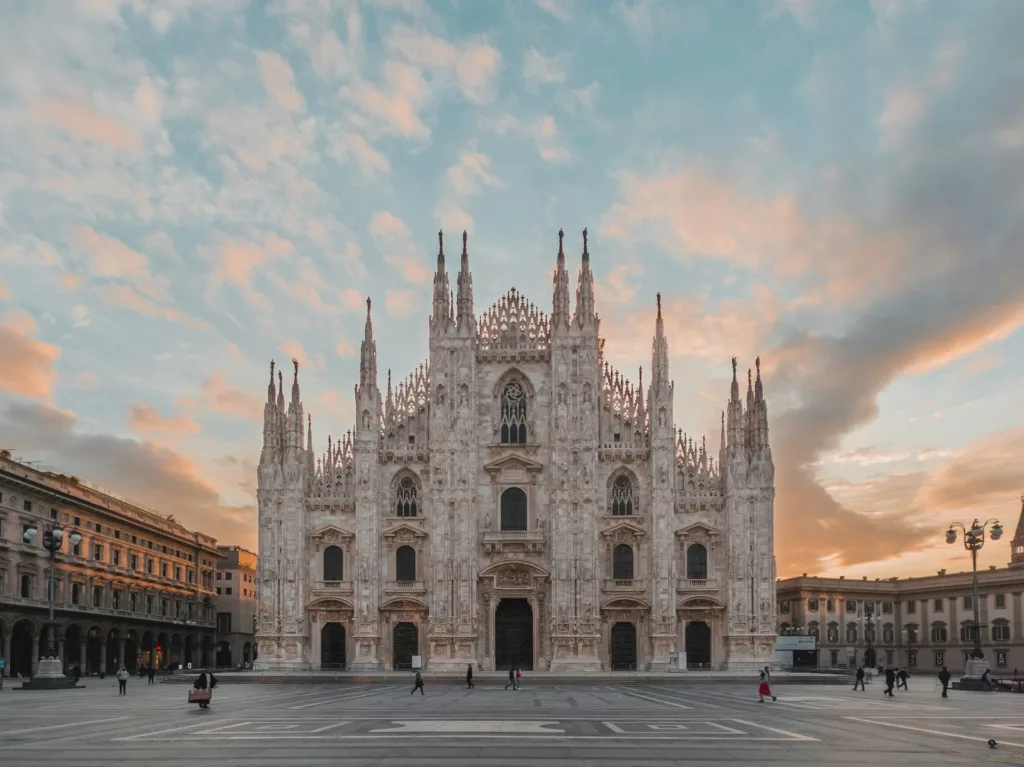
One of the biggest churches in the world and maybe the best representation of the extravagant Gothic architecture can be found in Milan’s majestic Santa Maria Nascente Cathedral, also known as “Il Duomo” to the locals. The cathedral’s impressive façade, adorned with 2,245 marble statues, and the 135 carved stone pinnacles that crown its roof create a striking initial impression that is further enhanced once entering the building.
The nave’s lofty ceiling is supported by fifty-two enormous pillars, and the largest stained-glass windows in the world adorn its walls. The bronze candelabrum from the 12th century and Gian Giacomo Medici’s tomb are the highlights of the nave.
The crypt and the octagonal chapel with the gold reliquary of San Carlo Borromeo are located beneath the high altar. The foundations of a basilica and baptistery from the fourth century are located beneath Piazza del Duomo and are accessible by stairs next to the entrance.
You can wander at an incredible height among the carved stone pinnacles on the roof, accessible via elevator that takes you part of the way to the top.
18. Capri
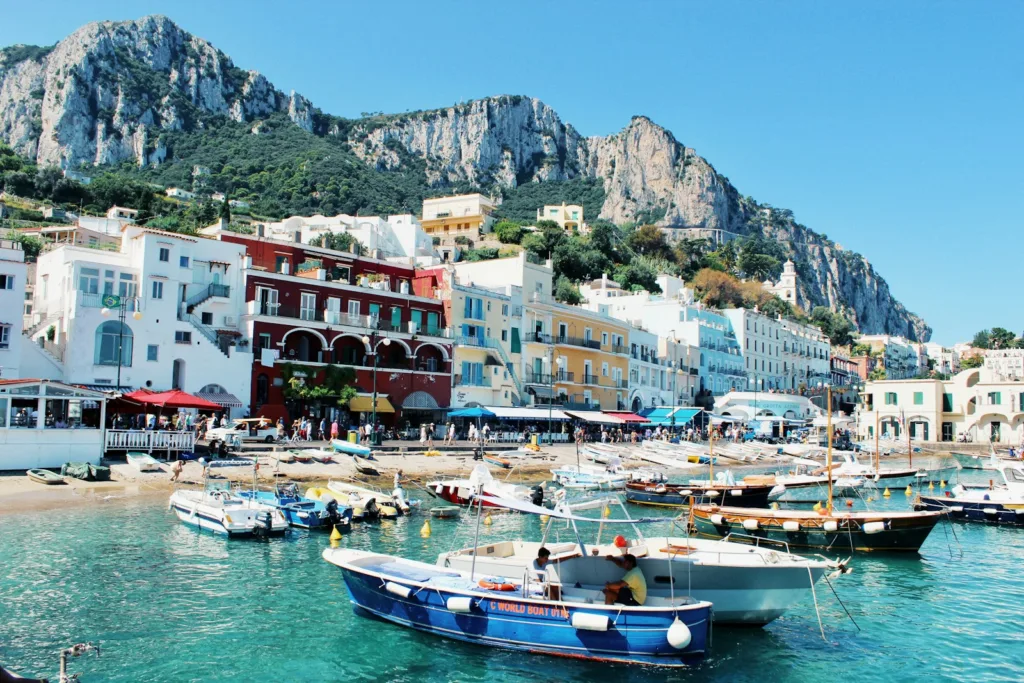
One of the most popular tourist destinations in all of Italy is the Blue Grotto, but there are more reasons to take the short boat voyage to the storied Isle of Capri from Naples, Sorrento, or the Amalfi Coast. With verdant pines and tropical vegetation softening its rugged cliffs, the steep, rocky island protrudes from a brilliantly blue sea.
A boat tour around the island is the ideal way to see the Blue Grotto and the three iconic rocks off the south shore known as the Faraglioni. The island is home to several marine caves. Tourists can explore the many gardens and villas that are open, as well as the walking trails.
There is almost always a good view available from wherever on the island. Perched high above the village of Anacapri, the stunning Villa San Michele boasts possibly the best views of the entire island from its grounds, which look out over the Marina Grande. You can take the bus there or, if you’re feeling very fit, climb the old Phoenician steps that are set into the precipitous mountainside.
19. Rialto Bridge, Venice
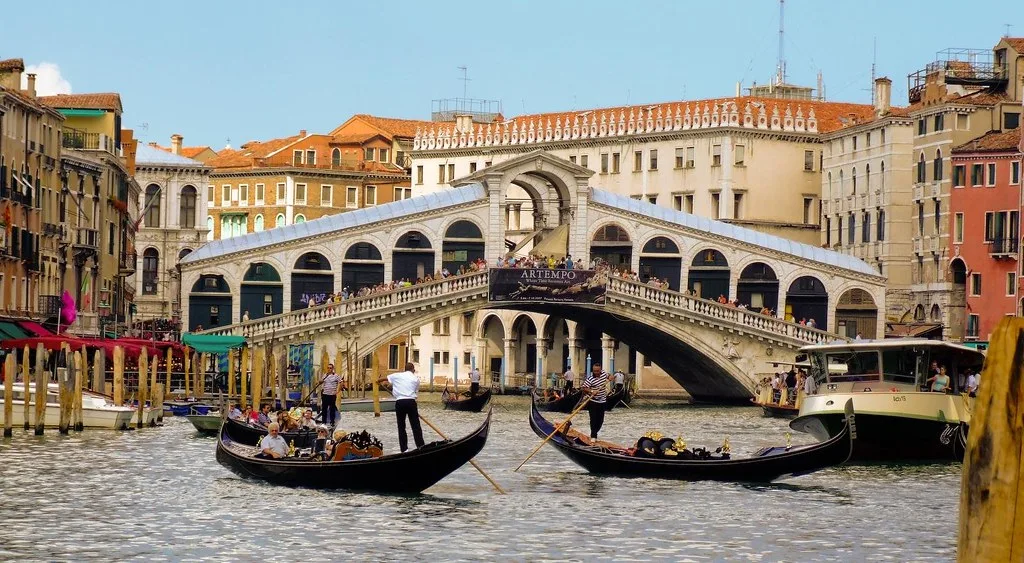
Encompassing over ten thousand wooden pilings, which date back to the bridge’s construction in 1588, the stone Rialto Bridge is a symbol of Venice and a vital conduit connecting the city’s two halves. It was the sole means of crossing the Grand Canal on foot until the Accademia Bridge was constructed in 1854. Still, it’s the busiest.
Despite fierce competition from Michelangelo and Palladio, the bridge’s architect was chosen to create it and suggested a structure with three walkways. The central walk is bigger and lined with tourist-oriented stores, while the outer two are always packed with tourists taking in views of the Grand Canal and its constant boat traffic.
The bustling food market in San Polo, on the other side of the Rialto Bridge, is where Venetians shop. Restaurants flank the canal on that side of the bridge, and if you follow the narrow streets into the neighborhood of independent stores and craftsmen, you’ll find even finer, smaller options.
Author’s Advice: Do cross the bridge and explore San Polo’s narrow streets. Shops that specialize in paper, bookbinding, mask and costume creation can be found here, as well as a woodworking shop where expert carvers sculpt the deftly balanced forcole, or oar posts used in gondolas.
20. St. Francis Basilica (Basilica di San Francesco), Assisi

Not only is Assisi one of the most popular pilgrimage sites on earth, but the St. Francis Basilica, dating back to the 13th century, is also significant in the history of art. Because of its dual significance, the birthplace of the Franciscan order and of St. Francis was inducted as a UNESCO World Heritage Site.
The basilica was built in 1228, the year of the saint’s death. It is composed of two churches: a lofty Gothic church situated above the lower, vaulted Romanesque church. Giotto and Cimabue are just two of the artists whose frescoes may be found in these two. Italy’s oldest Gothic church is this one.
Despite significant damage to the top of the church during the 1997 earthquake, restorations were completed in less than two years, restoring the church to its previous state. in honor of St. Clare, a follower of St. Francis, the Poor Clares order was established at Assisi, and the Gothic Basilica of Santa Chiara was constructed in 1265.
You may visit the adjacent hermitage of Le Carceri, where St. Francis retired to pray, and enjoy some sightseeing in Assisi, which includes a hilltop castle, la Rocca, and a cathedral with fine murals and ancient stone carvings.
You can go from Rome to Assisi by bus, train, automobile, or tour. Assisi is a wonderful day trip destination from Florence.
21. Piazza del Campo and Duomo, Siena

One of the most well-known public squares in Italy, the oval Piazza del Campo in Siena is encircled by aristocratic residences, whose red clay brick facades curve to enclose the piazza, which slopes downward. The magnificent Palazzo Pubblico, or Town Hall, with its remarkably tall tower, dominates the landscape. There are rows of windows with curved Gothic arches that break up the severity of the massive façade and battlements.
With its battlemented platform at the summit, the 102-meter-tall Torre del Mangia must have required a leap of faith from medieval architects and constructors. The Palio, a crazy bareback horse race that takes place twice a summer and is one of the most popular events in Italy, is the main reason for the fame of the Piazza del Campo.
The Cathedral of Santa Maria Assunta and its towering campanile are coated in dramatic black and white marble stripes that contrast sharply with the red brick found elsewhere in the city. Even more striking is its façade, which is a symphony of arches, gables, columns, reliefs, and pinnacles adorned with sculptures and finely carved stone carvings by the Renaissance master Giovanni Pisano.
Works by Pisano, Donatello, Bernini, Ghiberti, and other Renaissance masters fill the interior of Siena’s cathedral, combining with mosaics, paintings, sculptures, gold and silver work, illuminated manuscripts, mosaics, and stone and wood carvings to create a collection that rivals many of the most prestigious museums.
This abundance is a reflection of Siena’s competitiveness with Florence in terms of riches, art, and architecture during the 13th and 14th centuries. Despite being distinct seats of government in the past, Siena is now only a quick day journey from Florence.
22. Strada delle Dolomiti (Dolomite Road)

The Strada delle Dolomiti in Italy was named a World Heritage Site by UNESCO, which said it boasted “some of the most beautiful mountain landscapes anywhere, with vertical walls, sheer cliffs, and a high density of narrow, deep, and long valleys.”
The Dolomites are just as desirable for sightseeing and leisurely getaways, while being well-known to climbers and winter sports fans for having some of the best hiking and skiing in Europe (the town of Cortina D’Ampezzo is one of the top ski resorts in Italy and the location of the 1956 Winter Olympic Games).
The road between Bolzano and Cortina D’Ampezzo is easy to visit by automobile and is dotted with quaint little villages in breathtakingly gorgeous scenery. The Strada delle Dolomiti is well-maintained and free of the dangerous abrupt curves and steep drop-offs seen on many Alpine roads, in contrast to many other similar dramatic mountain routes.
Ötzi, the man who spent 5,300 years trapped in ice deep below a glacier, and his clothing and equipment, are worth seeing in Bolzano, the western terminus of the trip.
Author Advice: If you go off the main route, you’ll discover some communities nestled into valleys with houses decorated with paintings depicting scenes from the Alpine region. Taking the funicular up Col Burz in Arabba to get panoramic views is my favorite place to stop. In the summer, hikers and tourists can use a number of additional lifts that transport skiers throughout the winter.
23. San Vitale and Byzantine Mosaics, Ravenna

The Western Roman Empire had its capital at Ravenna, an Adriatic port, from 402 CE, when Emperor Honorius relocated his court from Milan. The endeavor to establish Ravenna as a hub for Byzantine mosaic art was initiated by Honorius and his sister, Galla Placidia. This endeavor was pursued under the reign of King Theodoric the Great in the sixth century.
The results, which line churches and monuments in opulent beauty, are almost unchanged from how these emperors saw them. With the exception of a few frescoes painted during the Baroque era, the whole dome of San Vitale is covered in images created by tesserae so tiny that they add up to resemble the delicate brushstrokes of a painter. More cover the walls and churches, making this the best-preserved display outside of Constantinople in terms of size and quantity.
Under a low, vaulted ceiling of deep blue, the smallest tesserae of the nearby Mausoleum of Galla Placidia form an intimate, otherworldly environment. The entire dome of a third structure, the octagonal Neonian Baptistery, is decorated with elaborate mosaic images.
24. Portofino, Liguria

The small Ligurian village of Portofino is worth a day trip from Genoa or a stopover on the route to the Cinque Terre for pure eye candy and a dose of la dolce vita, but it doesn’t have any outstanding art treasures or significant historic structures that make it a must-see destination.
With a semicircle of pastel houses overlooking a quaint bay full of boats, Portofino looks as though it were constructed as a film set (no, the Masterpiece series Hotel Portofino, although set here, was not produced here). Portofino begs to be photographed.
Portofino is full of beautiful restaurants and stores, and it’s a popular hangout for high-flying celebrities (you never know who you’ll spot in its cafés) and the paparazzi that follow them. Don’t let that deter you, though; the town’s scenic appeal will make you happy you took a break.
25. Costa Sud and Costa Verde Beaches, Sardinia

The miles of white sand beaches southwest of Cagliari, the city, lead the list of the best beaches in Italy. They slope into crystal-clear blue-green water and are surrounded by a breathtaking vista of rocky promontories and protected wildlands.
Pick your favorite type of beach: three miles of sand at Porto Campana, where you can rent equipment for kiteboarding or paddleboarding, take lessons, or go scuba diving in the crystal-clear ocean, or tiny, private coves tucked away between headlands. Another long beach with a mild, shallow drop-off that’s ideal for families with little children is Spiaggia Sa Colonia.
Tuerredda Beach is located close to Chia, and swimmers and snorkelers are drawn to its warm, blue-green seas. Beautiful Porticciolo Beach is a lovely crescent of white sand that is perfect for a more personal experience. The Costa Verde’s expansive white sand beaches, located further west where Sardinia’s coast turns north, are the most isolated of all.
The dunes that line the miles of white sands are some of the tallest in all of Europe. You won’t find many tourist amenities here, but you will find huge stretches of white sand where you may find a space to yourself even in August when it’s very busy.
read also :Mexico Top 10 Tourist Attractions
Italy Italy Italy Italy Italy Italy Italy Italy Italy Italy Italy Italy Italy Italy Italy Italy Italy Italy
Italy Italy Italy Italy Italy Italy Italy Italy Italy Italy Italy Italy Italy Italy Italy Italy Italy Italy Italy Italy Italy Italy Italy Italy Italy Italy Italy Italy Italy Italy Italy Italy Italy Italy Italy Italy Italy Italy Italy Italy Italy Italy Italy Italy Italy Italy Italy Italy Italy Italy Italy Italy Italy Italy


1 thought on “Italy Best 25 Tourist Destinations”